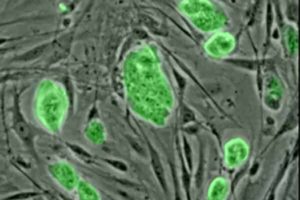Zhang
GRIN plasmonics
They said it could be done and now they’ve done it. What’s more, they did it with a GRIN. A team of researchers with the U.S. Department of Energy (DOE)’s Lawrence Berkeley National Laboratory (Berkeley Lab) and the University of California, Berke…
2 bacterial enzymes confer resistanceto common herbicide, say MU researchers
COLUMBIA, Mo. — In an article in the Nov. 23 issue of the journal The Proceedings of the National Academy of Science, researchers with Dow AgroSciences and the University of Missouri report on two bacterial enzymes that, when transformed into corn…
Dow AgriSciences, MU researcher develop a way to control ‘superweed’
COLUMBIA, Mo. — They pop up in farm fields across 22 states, and they’ve been called the single largest threat to production agriculture that farmers have ever seen. They are “superweeds” — undesirable plants that can tolerate multiple herbicide…
Strange new twist: Berkeley researchers discover Möbius symmetry in metamaterials
Möbius symmetry, the topological phenomenon that yields a
half-twisted strip with two surfaces but only one side, has been a source of fascination since its discovery in 1858 by German mathematician August Möbius. As artist M.C. Escher so vivi…
On…off…on…off… The circuitry of insulin-releasing cells
A myriad of inputs can indicate a body’s health bombard pancreatic beta cells continuously, and these cells must consider all signals and “decide” when and how much insulin to release to maintain balance in blood sugar, for example. Reporting in N…
Shape optimization of curved slots on 3-D surface
In the aeronautic and aerospace thin-walled structures, hole shape designs are very popular to achieve the weight reduction, structural reparation, cooling and other purposes and have important influences on the structural weight, performances and f…
New way to make realistic shadows in computer images
Scientists and computer gamers alike could benefit from a new method for creating soft, realistic shadows in computer-generated images. Engineers at Ohio State University have created computer algorithms that model how light passes through translucent three-dimensional objects or fluids such as water, clouds, fire, and smoke. The result: shadows that begin to approach the realism of Hollywood animation, but don’t require as much computer memory to create.



